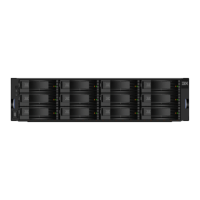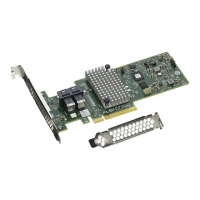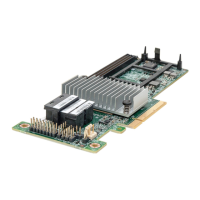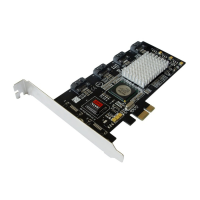logical
terminal
(LT). In MLT, one of
five
sessions
available
to
share
one
display
station.
logical
unit
(LU). In SNA, a
port
through
which
an end
user
accesses the SNA
network
in
order
to
communicate
with
another
end
user
and through which
the end
user
accesses the functions
provided
by
system
services
control points (SSCPs). An
LU
can
support
at
least
two
sessions, one
with
an SSCP and
one
with
another
LU, and
may
be
capable
of
supporting
many
sessions
with
other
logical units.
M
main
storage.
Program-addressable
storage
from
which
instructions and
other
data
can be loaded
directly
into
registers
for
subsequent
processing.
maintenance
analysis
procedure
(MAP). A
maintenance
document
that
gives
an IBM
service
representative
a step-by-step
procedure
for
tracing
a
symptom
to the cause of a failure.
mark. A
symbol
or
symbols
that
indicate
the beginning
or
the end of a field, a
word,
an item of
data
or
a
set
of
data
such as a file, record,
or
block.
medium.
A physical
carrier
of
electrical
energy.
memory.
Program-addressable
storage
from
which
instructions
and
other
data can be loaded
directly
into
registers
for
subsequent execution
or
processing.
Synonymous
with
main
storage.
microcode.
(1) One
or
more
microinstructions.
(2)
A
code, representing the
instructions
of an instruction
set,
that
is
implemented
in a
part
of
storage
that
is
not
program-addressable.
(3) To design,
write,
and
also
to
test
one
or
more
microinstructions.
multiple
logical
terminal
(MLT). In the 3174, a function
that
provides
a CUT-attached, fixed-function
display
station
with
the
ability
to
interact
with
as
many
as five
host sessions. Each
session
is processed as though
it
were
a
separate
display
station.
N
NetView. A
comprehensive
network
management
product
that is the basis
for
central control
of both
systems
for
network
operations. It
supersedes
NCCF,
NPDA, NLDM, and NPM.
network.
(1)
An
arrangement
of nodes and connecting
branches. Connections
are
made
between data
stations.
(2)
A
configuration
of data processing
devices
and
software
connected
for
information
interchange.
nonswltched
line.
(1)
A connection between systems
or
devices
that
does not have to be
made
by
dialing.
Contrast
with
switched
line. (2) A
telecommunication
line
on
which
connections do not have
to
be
established by
dialing.
Synonymous
with
leased
line.
o
online
test. A
diagnostic
test
or
data
collection
program
that
is run
without
interrupting
the
normal
operation
of
the
3174 and its associated
terminals.
original
equipment
manufacturer
(OEM). A
manufacturer
of
equipment
that
may
be
marketed
by
another
manufacturer.
p
port.
(1)
An access poi nt
for
data
entry
or
exit.
(2)
A
connector
on a
device
to
which
cables
for
other
devices
such as
display
stations and
printers
are
attached.
protocol. (1) A
set
of
semantic
and
syntactic
rules
that
determine
the
behavior
of functional
units
in
achieving
communication.
(2)
In SNA, the
meanings
of
and the
sequencing
rules
for
requests and responses used
for
managing
the network,
transferring
data, and
synchronizing
the states of
network
components.
R
random
access
memory
(RAM). A
storage
device
into
which
data is entered and from
which
data
is
retrieved
in a nonsequential manner. See
also
direct
access
storage.
remote. Pertaining
to
a system,
program,
or
device
that
is accessed through a
telecommunication
line.
request
for
price
quotation (RPQ). An
alteration
or
addition
to
the functional
capabilities
that
the
controller
provides.
Response
Time
Monitor
(RTM). A
network
management
tool
that
measures
and
records
the
transaction
times
of inbound host attention (AID)
operations
from
display
stations
that
communicate
with
the host.
ring
interface
adapter. A
device
that
assumes
the
basic data
transmission
functions of node, such as
frame
recognition,
address
decoding,
error
checking,
buffering of frames,
fault
detection, and, in Token-Ring
Networks, token generation.
ring
network.
A
network
configuration
where
a
series
of attaching
devices
are
connected by
unidirectional
transmission
links
to
form
a
closed
path.
Glossary
X-9

